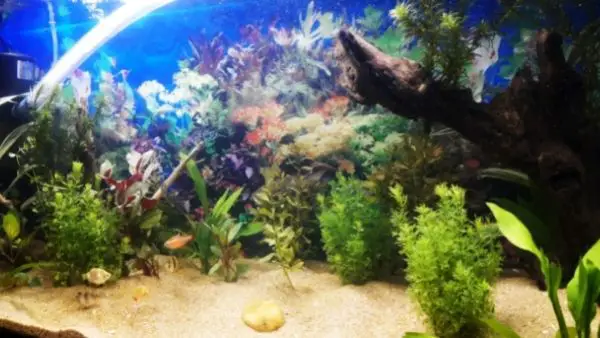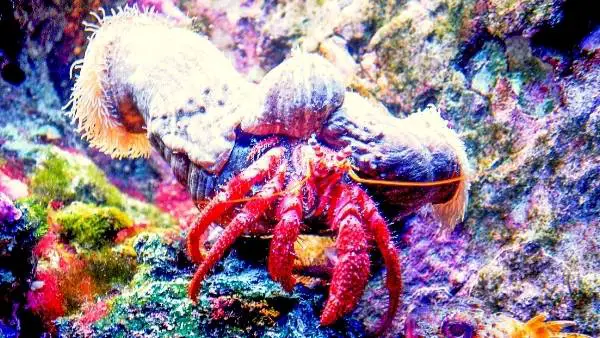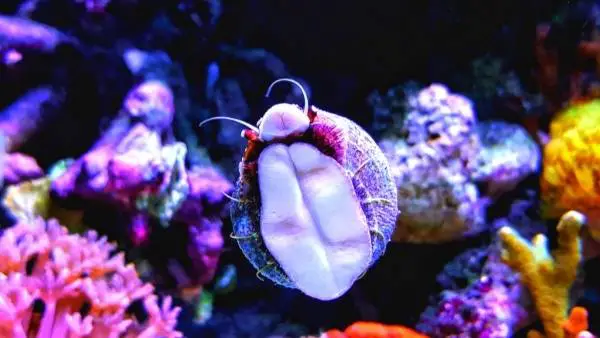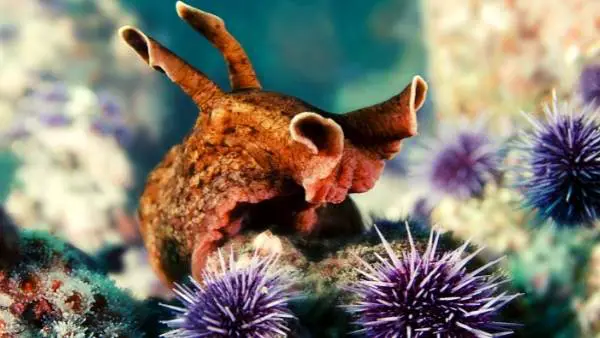One of the first and main recommendations, when you begin your journey through fishkeeping, is to gather and establish a Clean-Up Crew for your aquarium.
The rather amusing name, "clean up crew" is typically abbreviated to CUC amongst other hobbyists communicating online, and is the name applied to invertebrates that can either be discovered already residing in your tank, or purposefully introduced into your tank. They provide many benefits to your tank as they feed on algae, unwanted bacteria, and even uneaten fish food.
A clean up crew critter's diet essentially consists of most of the things you do not want residing in your tank, which is great as it alleviates some of the general aquarist stresses that come with fish keeping, and owning a fish tank.
Nuisance algae are an incredibly common find in new reef aquariums. They are attracted to bright surfaces, bright lights, and left-over nutrients. Once they start to appear in your tank, it can be tough to relieve your aquarium of this brown slimy mess. This is why the introduction of a clean up crew is essential even when you are literally only just beginning your aquarist journey with a brand new tank.
Discovering An Aquarium Hitchhiker
There are sometimes odd occasions where you will discover a hitchhiker in your tank, and if this happens it is important that you identify it straight away. Once you have identified the critter residing in your tank and concluded whether or not they will be a benefit or a nuisance, you will more often than not have a new clean up crew member that you will want to keep!

It is pivotal to understand that not all invertebrates you either introduce yourself or find within your fish community are helpful or will even clean your tank. For example, Harlequin Shrimp are starfish eaters, whereas other shrimp, like the Dancing Shrimp, will eat corals. Even Cleaner Shrimp, which actually have the word "cleaner" in their names don't clean tanks, instead, they clean fish, relieving them of parasites, dead skin, and scales. You do not want to introduce an invertebrate to do a cleaning job just to discover it is causing more harm than good.
So, like all algae eaters, freshwater and saltwater clean up critters will need to be fed themselves on an individual basis, in addition to the natural food sources they find (algae), this is especially important upon their initial arrival. Typically they will not have an abundance of algae to graze on, especially when you have a clean tank, so they must be fed other things to keep them going. Also, if you add too many Critters to your tank without enough food provided, they will starve and die out.
The Best Clean Up Crew Critters
Hermit Crabs
Hermit Crab species are in abundance, and so it is important you purchase the right ones for your community. The small species of Hermit Crab are reef safe and are likely the most suitable for your aquarium. Hermits tend to go about their business simply snacking on algae and uneaten food from rocks and sand. They are tremendously entertaining little critters to watch and observe and they are also very cheap and readily available.

If there is any drawback with Hermit Crabs it would be that they require a few large spare shells to move into as they grow to bigger sizes. If there are no available spare shells, they have been known to remove smaller crabs from their shells and steal theirs. They are also known to kill snails, eat the meat, and then move into their shells too. The optimal amount to add to your aquarium community would be 5 or more of this algae eater.
Nassarius
Nassarius, or, as other people call them "Nas Snails" have a plain, brown/beige-colored complexion. They enjoy burrowing and moving along the sand, meaning when you host these critters, keep the sand constantly turned over and fresh. Unlike the other snails mentioned on this list, the Nassarius are meat eaters and will not eat algae. They have even been known to snack on fish corpses if there is one lying around.
They have a fantastic sense of smell and use their proboscis to poke out of the sand to smell the water for food. As soon as you place food in your tank they will smell it and head over immediately. Adding anywhere between 5 and 10 of these snails is good for an average-sized reef tank.
Snails
Unlike the Nas Snail, the majority of clean-up snails will eat algae. Examples include Turbo, Tectus, and Astrea Snails, with most of them being sold under the "Turbo" name regardless of the True Mexican Turbo Snail having a totally different shell-shape to the common cone-shaped species. Algae grazing snails will consume algae from rocks, sand, and tank glass, despite preferring smoother surfaces in high flow water areas.

It is fairly common knowledge amongst hobbyists that mixing snails and hermits is perhaps not the best idea in the world. This is because some hermits have been known to eat snails and hijack their shells. However, this couldn't happen if you own an established tank with many different grazing options, and of course, plenty of other shells your crabs can occupy instead. Also, a strong snail that is sitting on a firm surface should be able to avoid an attack.
Adding around 5 snails to an average-sized tank is your best bet. If they do run out of food they will die quickly, so make sure you add a number suitable for the availability of food in your aquarium. In an established reef tank, with the right water parameters, they should survive for a while, helping you out in the process.
Emerald Crab
The Emerald Crab, or the scientific name of "Mithrax Crab", are green-colored crabs that feed on bubble algae, and they are actually the only critter on our list that feeds on these annoying algae. They will usually be brought in specifically to feed on the bubble algae, however, they graze on other algae and uneaten food, they are really not that fussy! Adding 3 to 4 to an established tank that is of average size is the recommendation. They can be incredibly elusive, so don't be shocked if you do not see them very often.
Sea Hare
Sea Hares are a relatively common species of Sea Slug and are specialist hair algae eaters. These slugs are brown in color and are brilliant eaters and enjoy large, healthy algae. It only takes 1 slug to pretty much rid an established tank of their Hair Algae in just a matter of days.
Due to their eating habits and large appetites, Sea Hares have been known to starve once they have run out of food. Typically hobbyists will loan these critters out due to their helpfulness, and once they have done their job, they will be returned to their original owner or the store they came from.

Sea Hares have unfortunately been known to get stuck in pump inlets and can release a unique purple ink into your tank if they are stressed, injured, or feel threatened. Fortunately, this ink seems harmless, so do not freak out if you see this appear, just simply find out why they are being spooked.
Sand Sifting Starfish
The name somewhat gives away what these starfish do on a regular basis, which is sifting the sand at the bottom of your tank, as well as burrowing just below the surface of your sand, keeping it clean and turned over as they progress through it.
Their ideal environment would be a large area of mature, fine aragonite sand, and if they are provided with this then they can and will likely survive for many years, returning to the surface on the odd occasion, and subsequently helping you and your community out along the way.
One Sand Sifting Starfish will need a minimum of 35x12 inches (90x30cm) sand bed, if you were to have three, then the dimensions should be 60x24 inches (150x60cm). They are also one of the easiest starfish to keep too.
Conclusion
In conclusion, having a good crew of clean-up critters is so important for multiple reasons. Not only will your critters help with the maintenance and cleanliness of your tank, but they will keep a lot of your fish safe too, and alleviate the stresses and pressure off you, the hobbyist. This is because you will not need to clean your tank as regularly, and your fish will likely contract a lot fewer diseases too!
